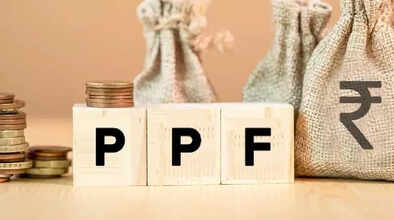PPF Investment: Trick of double profit for husband and wife! Tax is zero, interest is also high - know how to take full advantage.

PPF Investment: By adopting a small trick, you can double your PPF investment and also get double the benefit of interest. Yes, this is not magic but a completely legal and easy method, by adopting which married investors can create a big wealth in the long run.
As soon as the name of savings comes up, the first scheme that is trusted is the Public Provident Fund (PPF). Government guarantee, tax-free interest, and great long-term returns - all this makes PPF a perfect saving option.
But do you know that by adopting a small trick, you can double your PPF investment and also get double the benefit of interest? Yes, this is not magic but a completely legal and easy method, by adopting which married investors can create a big wealth in the long run.
Why is PPF special?
PPF is not just a savings account. This is an all-in-one tool in which:
Your investment is safe (because it is government guaranteed).
The interest is completely tax-free.
And there is no tax on the amount received on maturity.
That is, it comes in the E-E-E category - Exempt, Exempt, Exempt.
That is, your investment, interest and maturity amount - all three are completely tax-free.
What is the trick to double investment?
Usually people think that one cannot invest more than ₹1.5 lakh annually in PPF. This is true - but only for one account.
Now suppose you are married. So what can you do?
Open a PPF account in your name and invest up to ₹1.5 lakh.
Open a PPF account in the name of your partner (husband/wife) as well and put ₹1.5 lakh in it.
Now the total PPF investment of your family is ₹3 lakh annually.
Interest will be given separately on both the accounts and the maturity amount of both will be tax-free.
Double benefit of interest
At present, 7.1% annual interest is being given on PPF.
Now if you just put ₹ 1.5 lakh annually in your account, then after 15 years you will get a huge return.
But if both husband and wife invest in the account, then:
Investment = Double
Interest = Double
Tax = Zero
That is, while you can get an amount of up to ₹ 40–45 lakh after 15 years from one account, this amount can directly reach ₹ 80–90 lakh from two accounts.
Fear of tax clubbing?
Many investors think that if the husband opens an account in the name of the wife and puts money, then the Income Tax Department will club the interest.
But here is a big relief - PPF comes in the EEE category. That is, the interest and maturity amount are completely tax free.
Therefore, the provisions of clubbing do not affect PPF.
The power of E-E-E category
Imagine, your family has two PPF accounts and invests ₹3 lakh every year. After 15 years, when both these accounts mature, you will have a tax-free amount of crores. That is, you can make your retirement stronger just by planning without any risk.
Example Calculation (Illustrative)
Husband's account: ₹1.5 lakh annually → after 15 years → ₹44 lakh
Wife's account: ₹1.5 lakh annually → after 15 years → ₹44 lakh
Both together: more than ₹88 lakh (tax-free)
Conclusion
If you want safe investment and want to save tax, then PPF is best for you. But if you adopt this double trick, then this scheme becomes even more powerful. If husband and wife invest together, then not only will the returns be doubled but the financial future of the house will also be very strong. That is, PPF is not just a savings account, but a guarantee of wealth creation.
FAQs (Frequently Asked Questions)
Q1. How old is a PPF account?
A: The term of a PPF account is 15 years, which can be extended in further 5-year periods.
Q2. Can NRIs also open a PPF account?
A: No, NRIs are not allowed to open a new PPF account.
Q3. Where can a PPF account be opened?
A: You can open a PPF account in any bank or post office.
Q4. How many times can you deposit money in a PPF account?
A: You can deposit money in a maximum of 12 installments in a financial year.
Q5. Is there a loan facility in PPF?
A: Yes, the facility of taking a loan is available from the third year of the PPF account.

